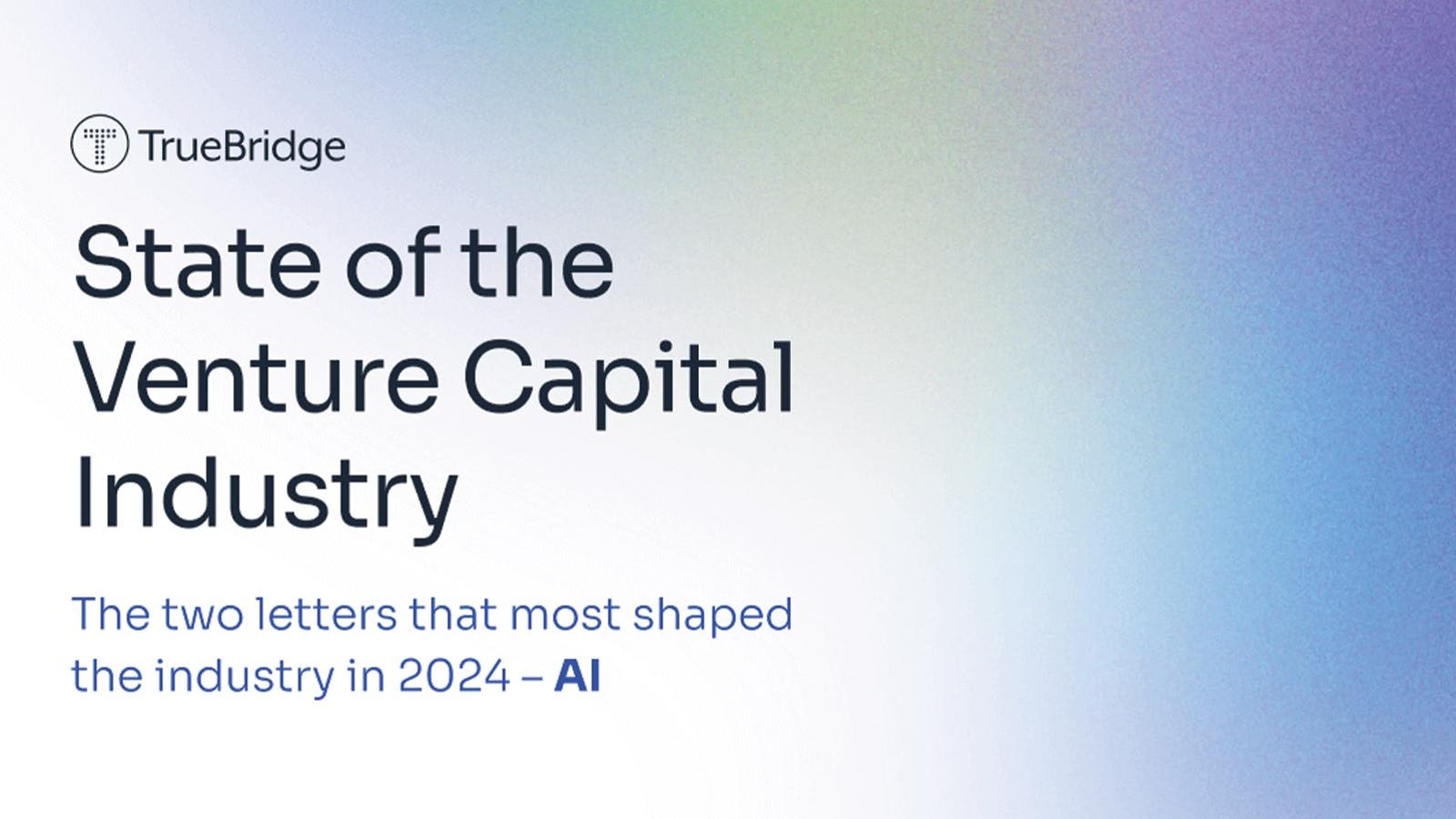Artificial intelligence defined venture capital in 2024, showing up often and everywhere. But there were other signs of optimism that also boosted the industry, including crypto’s resurgence and the secondary market boom. Throughout the year, the pipeline of pre-IPO companies continued to expand, and strong VC performance made the case for investing in top quartile, established venture funds.
Those tailwinds were met with some headwinds, particularly related to the exit market and fundraising for emerging managers and companies. The geopolitical and macro environment continued to grow increasingly complex throughout 2024. Still, we see reasons for sustained optimism as we move farther into 2025.
Once a year, TrueBridge Capital explores the most impactful trends in the venture capital industry, synthesizing the greatest takeaways from the past year and offering a glimpse into what’s ahead. See the key takeaways from our full State of the Venture Capital Industry below.
The fog begins to lift
Looking back, 2021 was a record-breaking year for the venture capital industry, with 23 funds raising over $1 billion. Capital investments surged 98% in one year to a whopping $330 billion, and LPs averaged around 50% returns on their investments. Many in the industry wondered if the highs of 2021 were the new standard.
Instead, the industry experienced a measured recalibration over the next two years, and as the fog settled on nearly every aspect of fundraising and dealmaking, attitudes quickly shifted toward caution. Fortunately, 2024 showed signs of recovery. There were more than 15,000 transactions in the year, the third-highest total since 2014, and a 29% increase in capital invested compared with 2023.
Much of this resurgence in activity occurred in early-stage transactions as investors sought to participate in the AI feeding frenzy. AI and machine learning startups captured nearly half of all venture capital deployed in 2024, including roughly 77% of capital invested at the seed stage.
AI & ML VC Deal Activity
AI also continued to demand a valuation premium in 2024, with fourth quarter deals led by Databricks, OpenAI, xAI, Waymo, and Anthropic accounting for 43% of total deal value for the year. Investors active in the sector are poised to capitalize on the next wave of opportunities in 2025 and beyond as companies like DeepSeek continue to impact the industry.
Flight to the familiar
In recent years, LPs have made record-breaking capital commitments to an increasingly concentrated mix of venture capital funds. This trend continued in 2024, and as the industry continued to see fewer exit opportunities and limited liquidity, investors turned to established managers who have proven time and again that they can return capital.
A total of $76.1 billion was raised across 508 funds in 2024, marking the lowest numbers since 2019 and a 60% decline since the height of 2022. With LPs placing greater emphasis on the familiar, the top 30 funds captured 75% of this volume. This concentration of capital was further exacerbated by AI’s dominance, as startups gravitated toward industry behemoths with the capabilities needed to help them navigate AI’s uncharted territory.
Unsurprisingly, first-time funds struggled to keep up, experiencing decade lows in fund counts and total capital raised. Although there are signs that markets may be in the early stages of a comeback, it is likely that the large industry incumbents will continue to have the advantage in 2025.
The struggle for liquidity
Exits rose slightly in 2024, with $149.2 billion generated across nearly 1,300 transactions, representing a 24% increase in value and a 10% rise in exit count from 2023. Nevertheless, the IPO market remained stalled as companies continued to stay private longer, and distributions to investors matched levels not seen since the 2008 financial crisis. The median age of companies raising Series D or later rounds rose to a near-decade high of 9.7 years, signaling founder skepticism over market conditions and placing pressure on investors to unlock liquidity in other ways.
Although M&A activity in 2024 continued to be constrained by an uncertain, volatile regulatory environment, a few high-profile public listings hinted at renewed optimism for market conditions to stabilize in 2025. Reddit and ServiceTitan both achieved multi-billion-dollar IPOs, and despite experiencing initial public market valuation setbacks, both companies have rallied and demonstrated sustained investor confidence in their long-term potential.
VCs tap the secondary market
With increasing amounts of capital locked up in private companies, the secondary market proved to be a mutually beneficial, albeit newer path forward for founders and investors alike. For founders and their companies, the secondary market offers cash flow and an opportunity to time liquidity events more strategically. For LPs whose investments are tied up in companies that have continued to stay private longer, the secondary market offers both a shortcut to liquidity and access to promising startups at potentially discounted prices.
With the secondary market on the rise in 2024, secondary deal volume was estimated to be more than $100 billion. Tender offers have also become an increasingly important liquidity option for venture-backed companies, with six of the top ten most valuable VC-backed startups in 2024 having executed multi-billion-dollar tender offers, ultimately raising significantly more than the total value of tech IPOs over the last two years combined.
The explosion of the secondary VC market reflects the adaptability and resilience of the venture ecosystem. When faced with a sustained period of limited liquidity, investors and founders found a way to drive growth. With an increased presence in the secondary market, venture capital firms demonstrated their ability to support their portfolio companies and generate distributions to investors across market cycles.
Building off a record-setting year for VCs in the secondary market, 2025 looks to be no different. Investors now have more tools than ever to access top-tier companies and unlock liquidity. Even if public markets rebound, the distributions flowing to LPs are unlikely to fully offset several years of low distributions signaling the continued strength of venture secondaries as a tool for savvy managers.
Read the full State of the Venture Capital Industry report to learn more about the trends shaping the venture ecosystem in 2025.








